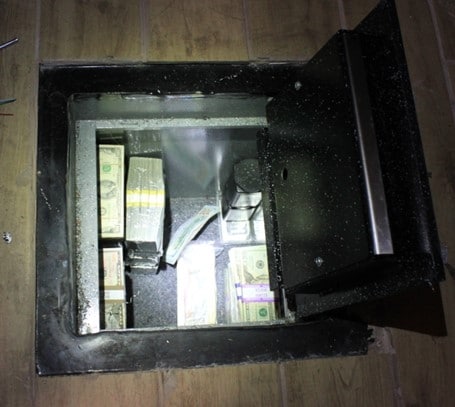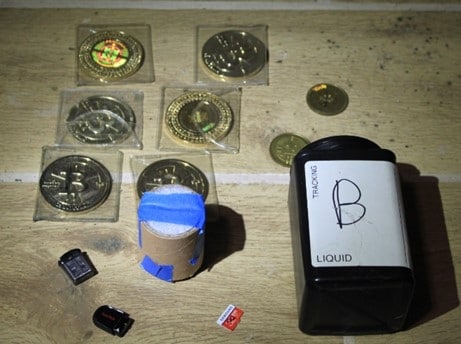A new report delves deeper into the life of Jimmy Zhong, shedding light on his involvement in the theft of thousands of Bitcoins from Silk Road.
In 2012, someone stole 50,000 Bitcoins from Silk Road, an illegal online marketplace on the darknet. Since then, the value of the stolen BTC has skyrocketed to over $3 billion. It has remained one of the biggest mysteries in the cryptocurrency world.
However, light has recently been shed on this mystery. Journalists discovered previously unreleased footage that provides a glimpse into the investigating process. CNBC published the story of the life and arrest of Jimmy Zhong and released a new documentary called “Crypto 911: Exposing a Bitcoin Billionaire.”
Who is Jimmy Zhong?
Jimmy Zhong came to study in the United States from China and masqueraded as a wealthy student living near the University of Georgia in Athens, trying not to miss local parties.
In 2012, James Zhong, “Jimmy,” is 22. He is a student at the University of Georgia, the unloved child of a divorced Chinese immigrant couple, suffering from bullying, obesity, an undiagnosed autism spectrum disorder, and drug and alcohol addiction.
On one September day, Jimmy decides to either buy heroin for a successful weekend or quit this thankless task and finally withdraw all the money from the market. Prosecutors and lawyers are divided on the issue, but after double-clicking the withdraw button from his Silk Road account, James suddenly discovers that the system has allowed him to withdraw double the amount of cryptocurrency. An amount that, by definition, was not in his wallet.
How Zhong stole money
Zhong immediately devised and implemented a scheme to steal funds from the “internal bank” of the marketplace. He created a chain of about nine accounts without advertising his identity, without buying or selling anything.
Then he funded each account with between 200 and 2,000 Bitcoins (BTC) — and carried out more than 140 quick, literally within one second, transactions to force the withdrawal processing system to transfer about 50,000 Bitcoins from the payment scheme to 2 of his accounts.

Subsequently, he periodically transferred assets to many separate addresses under his control, so it was impossible to trace the source of the bitcoins and their ownership. The fiat equivalent of the cryptocurrency James withdrew at the time of the abduction was $620,000.
In August 2017, five years after the exploit itself, as a result of a hard fork, Bitcoin was divided into traditional Bitcoin and Bitcoin Cash. Like all other users who had a Bitcoin balance in their electronic wallets at that time, James received an additional 50,000 BCH, which he exchanged on a foreign crypto exchange for 3,500 Bitcoins. Thus, he became the proud owner of about 53,500 Bitcoins, which he hid using crypto mixers for almost ten years.
Investigation
It all started on March 13, 2019, with a 911 phone call from Zhong himself, who reported his home had been broken into and hundreds of thousands of dollars in cryptocurrency stolen. It played a key role in the investigation.
According to the report, an initial investigation into the theft from Zhong’s home did not identify any suspects. The Athens-Clarke County Police Department had no experience dealing with cryptocurrencies and had difficulty finding success.
Seeking answers, Zhong turned to local private investigator Robin Martinelli for help. Although Martinelli did not understand cryptocurrencies, she was determined to solve the case.
“Jimmy was a good guy.”
Robin Martinelli, private investigator
Martinelli combed through the extensive surveillance system of Zhong’s home and came across a vital piece of evidence – a slender figure captured on video footage from the night of the crime.
However, the hacker’s identity remained hidden until a small misstep occurred. In September 2019, a hacker mistakenly transferred approximately $800 worth of BTC to a cryptocurrency exchange that followed established banking regulations, including know-your-customer procedures.
To the surprise of investigators, the account used for the transaction was registered in the name of Jimmy Zhong, linking him to the stolen Silk Road funds. The IRS contacted the Athens-Clarke County Police Department seeking cooperation in building a strong case against Zhong.
In 2019, 7 years after the fateful double “click”, the government and the investigative department of the US Internal Revenue Service, having carefully studied the data of the Silk Road servers, began an investigation into the location of those very 53,500 Bitcoins that were subject to direct confiscation according to the verdict by which the founder of the darknet marketplace Ulbricht was convicted in 2015.

In November 2021, the FBI seized 50,491 Bitcoin from Silk Road, $661,900 in cash, gold and silver bars, 25 Casascius coins, and 11 “additional” Bitcoins that were not related to the theft from a lake house. Out of the blue, James kept his billions in a safe under the floorboards and on a single-board computer wrapped in a blanket in a Cheetos popcorn tin in the bathroom.


From creator Zhong to BTC thief
The investigation found that Zhong, an early programmer believed to have been involved in the development of Bitcoin since its inception in 2009, played a role in perfecting the technology.
Ironically, the hacker who helped create Bitcoin turned into one of the most notorious BTC thieves in history. Zhong was charged with wire fraud, pleaded guilty, and was sentenced to one year and one day in federal prison, effective July 14, 2023.
Zhong was unable to keep the illicit funds despite his huge fortune in stolen BTC. The U.S. government has seized the assets, initiating a process for victims of the Silk Road hack to get their lost Bitcoins back.
